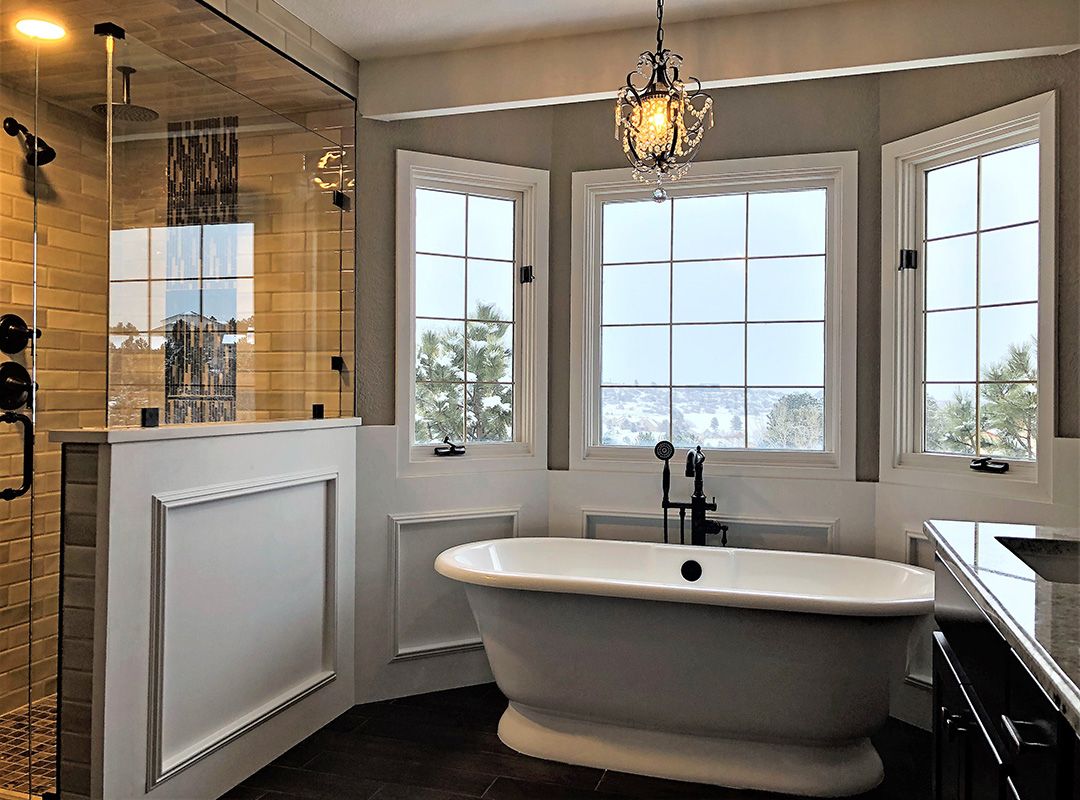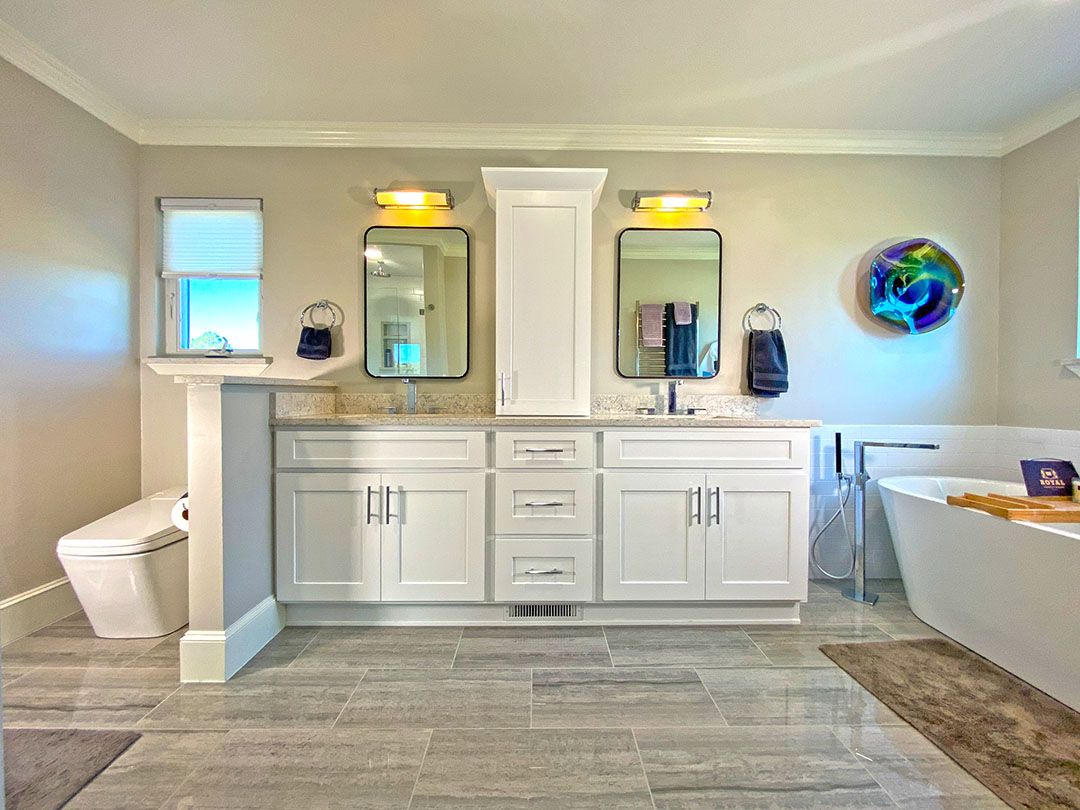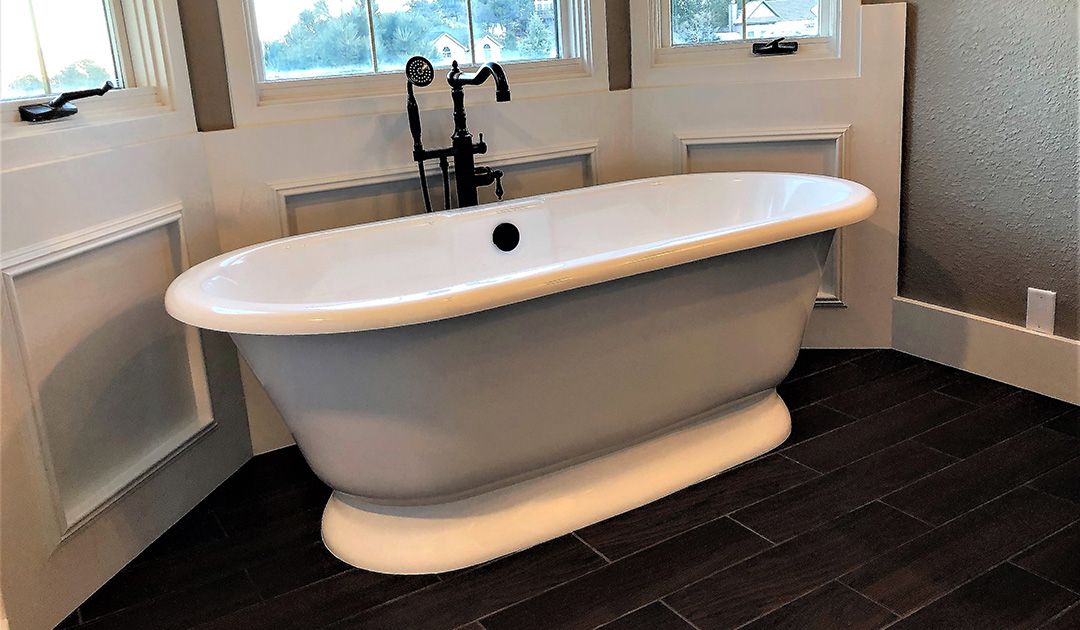
Essential Considerations for Your Bathroom Remodel in Colorado Springs: A Guide to Functionality and Style
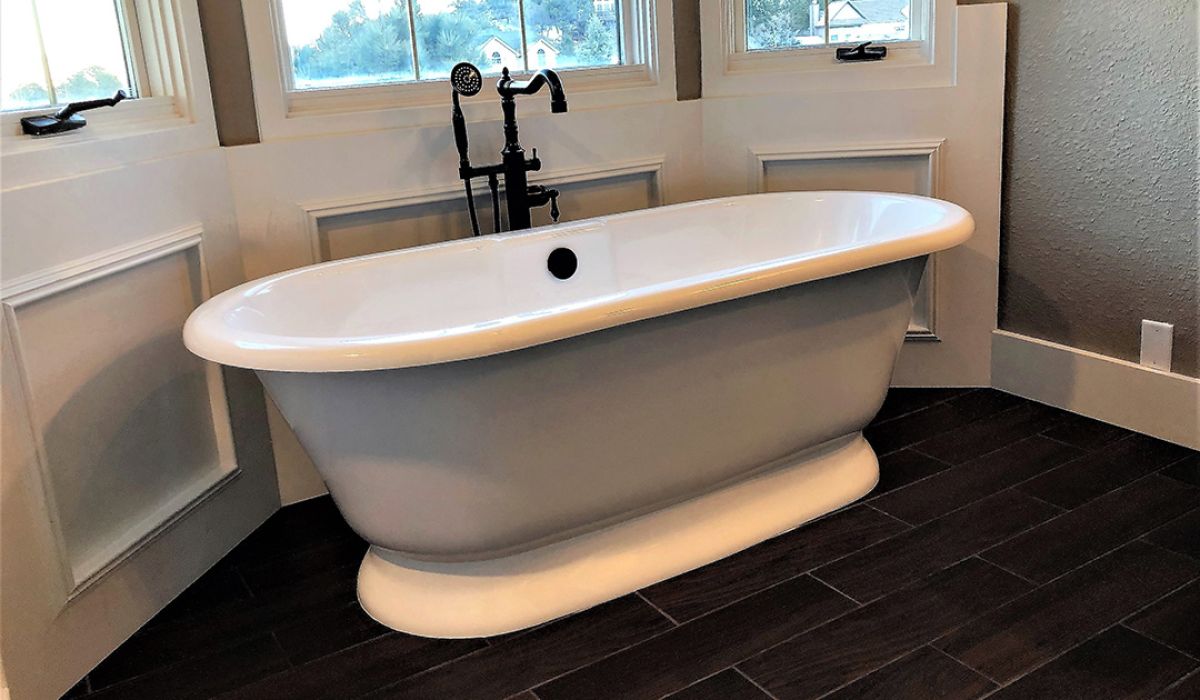
Any realtor will tell you: kitchens and baths are the most important rooms in a home. Let’s do it right.
Updating your bathroom is a wise investment both if you intend on staying in your homes, and also, if you intend on selling it. According to FortuneBuilders, bathroom remodels offer the greatest return on investment over all other major home renovations. We’re not sure that’s entirely true, but we are sure that the bathroom is incredibly important. Here’s our list of what to consider when planning and budgeting your bathroom remodel.
1 – Flooring
Bathrooms, by nature, are the most wet area of the home. Your flooring needs to be able to seal water from penetrating into the underlying framing and structure of the home, while at the same time helping to protect you from potential slips and falls. Carpet and most woods, even engineered materials, are discouraged due to their porous nature and ability to trap moisture. We’ve all seen it done, but there’s just better options. Laminates and textured tile, along with coarse natural stone are the best options. These materials come in countless sizes, shapes, colors, and textures. A custom tile job is truly only limited by your imagination.
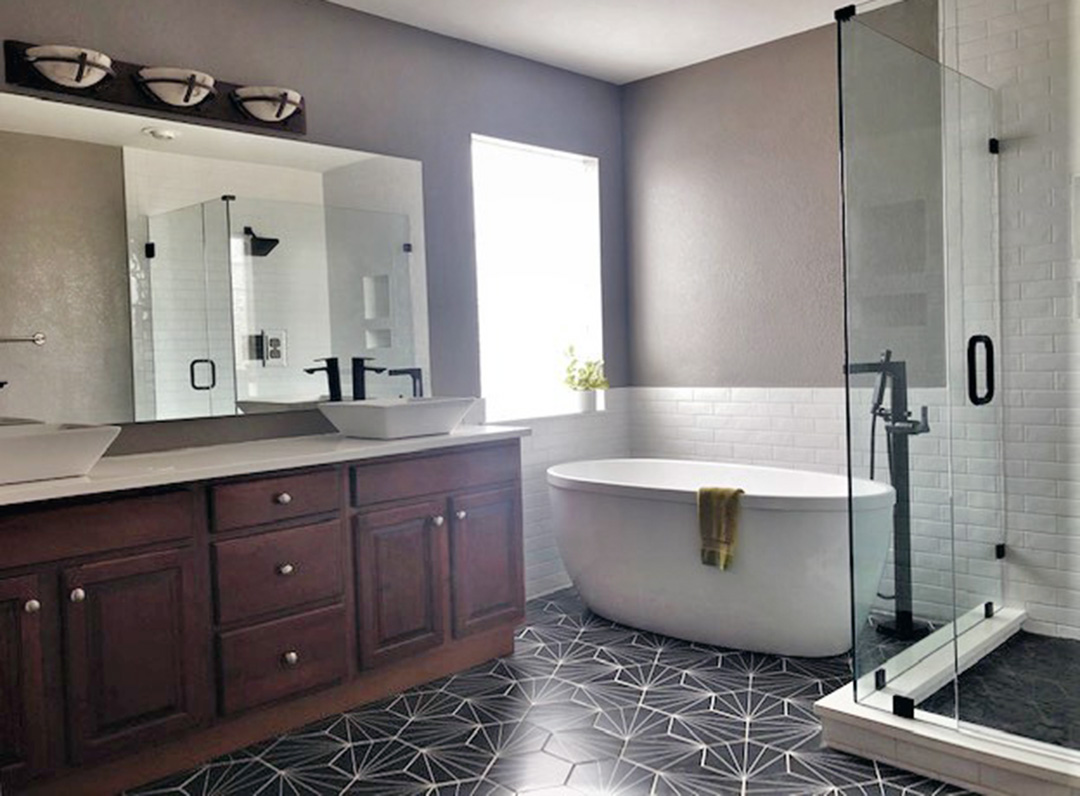
2 – Shower Floors and Bases
While on the topic of flooring, the material you choose for your shower base is also important. Here, we recommend against large texture tiles you may have chosen for your primary floor. Within the shower, you’re looking for as much traction as possible, and small, textured tiles with plenty of grout lines are the best choice. Again, this is a stylish option that can be colorized or arranged in any pattern but it’s also highly functional. Naturally, we’ll ensure the tiled shower base is properly sloped for drainage.
Tile isn’t the only option. There’s the less expensive vinyl prefabricated shower bases, but don’t forget about acrylic or porcelain. These bases offer proper drainage and texture while providing a sleek and modern appearance.
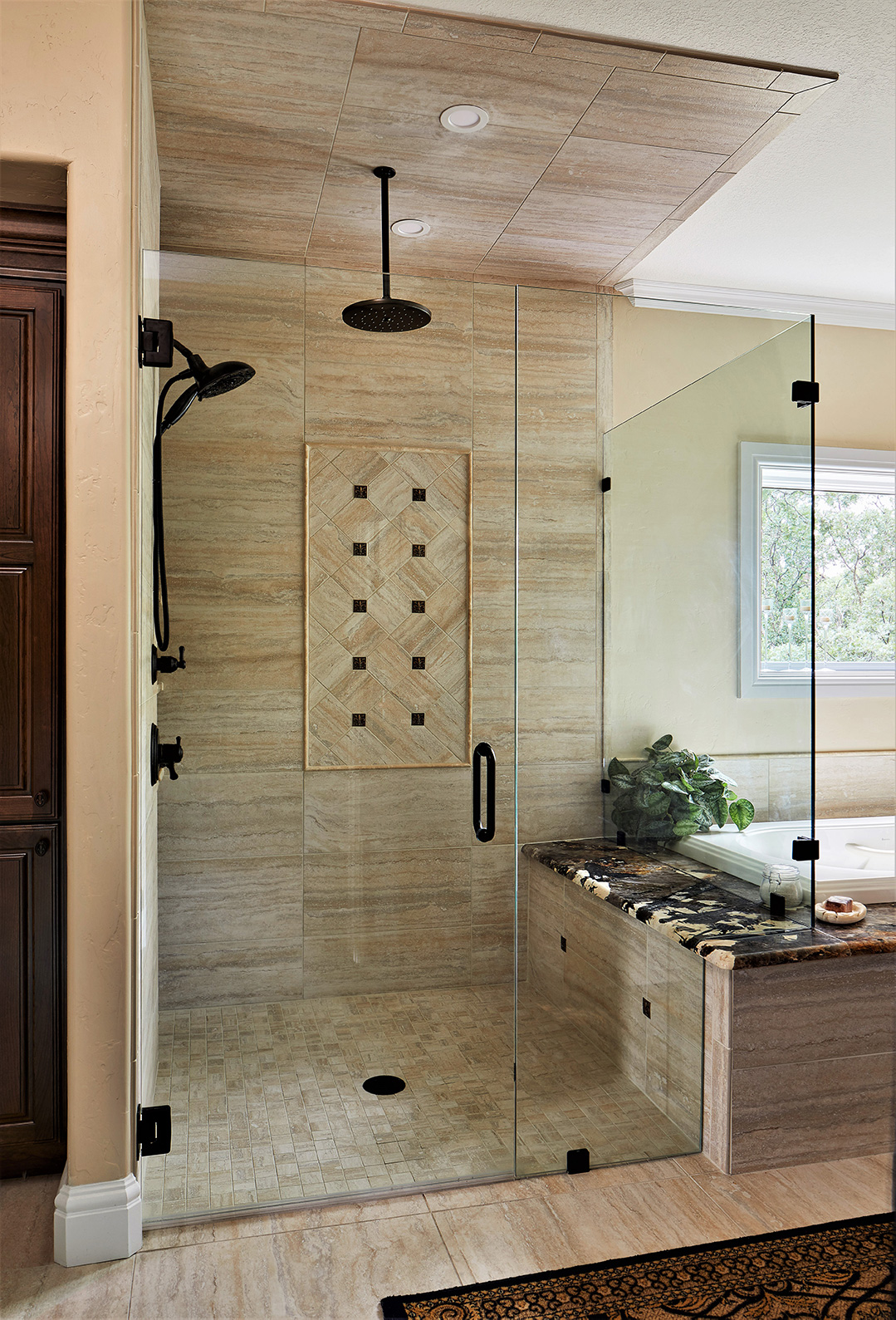
3 – Shower or Tub?
Speaking of showers, what’s the best option–a shower, or tub? Well, that depends on you. It’s important to think about how many baths you truly take in a year. If you find yourself taking a couple per month, you may want to consider an extravagant tub more in line with with a personal retreat bathroom designed to suit to an in-home spa experience. If you’re not a bath person, we recommend foregoing a dedicated bathtub altogether. It may be important to have at least one bathtub in the house for kids, pets, and unexpected medical reasons, but there’s no reason to have more than that if you don’t use them. Stepping over the edge of the tub into a combined shower, especially as you age, is one of the leading slip and trip hazards sending thousands to the hospital each year. Dedicated showers are highly functional, and with the right enclosure, can be quite appealing to the eye.
4 – Lighting
Proper lighting in bathrooms is essential, and often overlooked. We recommend as much natural light as possible. This includes transom windows above showers, skylights, and operable windows with screens and privacy glass. Sunlight helps kill mold and mildew and accelerates the evaporation process. An operable window that allows fresh air is key for ventilation, doing a much better job than fans alone.
Obviously, lighting fixtures are also important. Proper lighting allows for attention to detail in personal care and is a luxury often overlooked. Fixtures on the ceiling and surrounding mirrors is important, but don’t forget your shower enclosure.
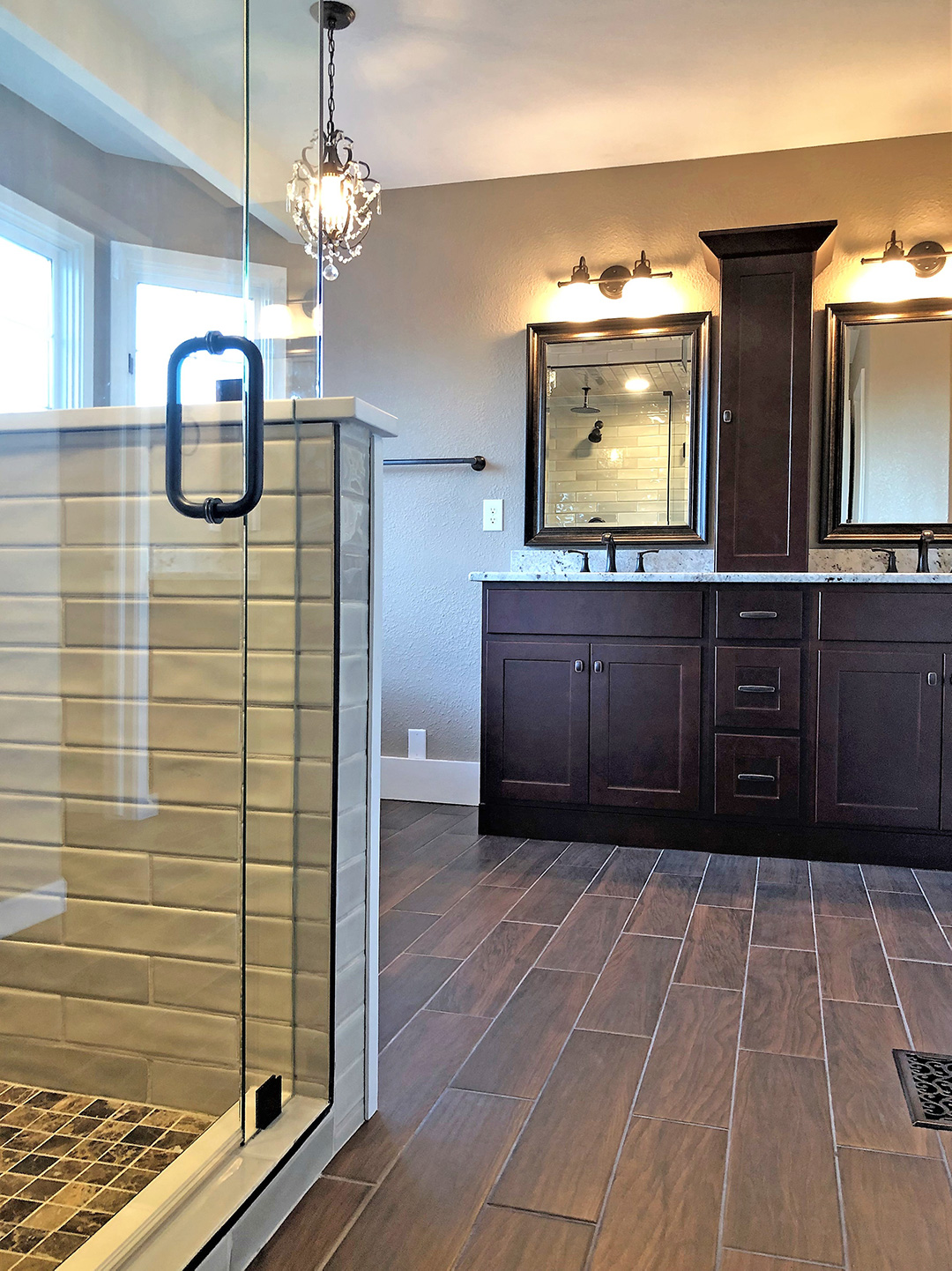
5 – Drawer Storage
Consider choosing a vanity with drawer storage rather than doors. Drawers are easier to access and organize, and can be built in all sizes to accommodate a variety of items. Drawers can also be designed to operate around plumbing. We’ve learned – drawers are just more functional and lead to a better experience.
6 – Plumbing
The plumbing within most residential bathrooms uses 1-1/2 inch drain pipe. If allowed, we always recommend upgrading to 2 inch drain pipe. The cost is essentially the same, but the larger diameter allows for better water flow. Bathroom drains take a lot of abuse, and lot of things other than water typically goes down them. The larger the drain, the less likely it is to clog.
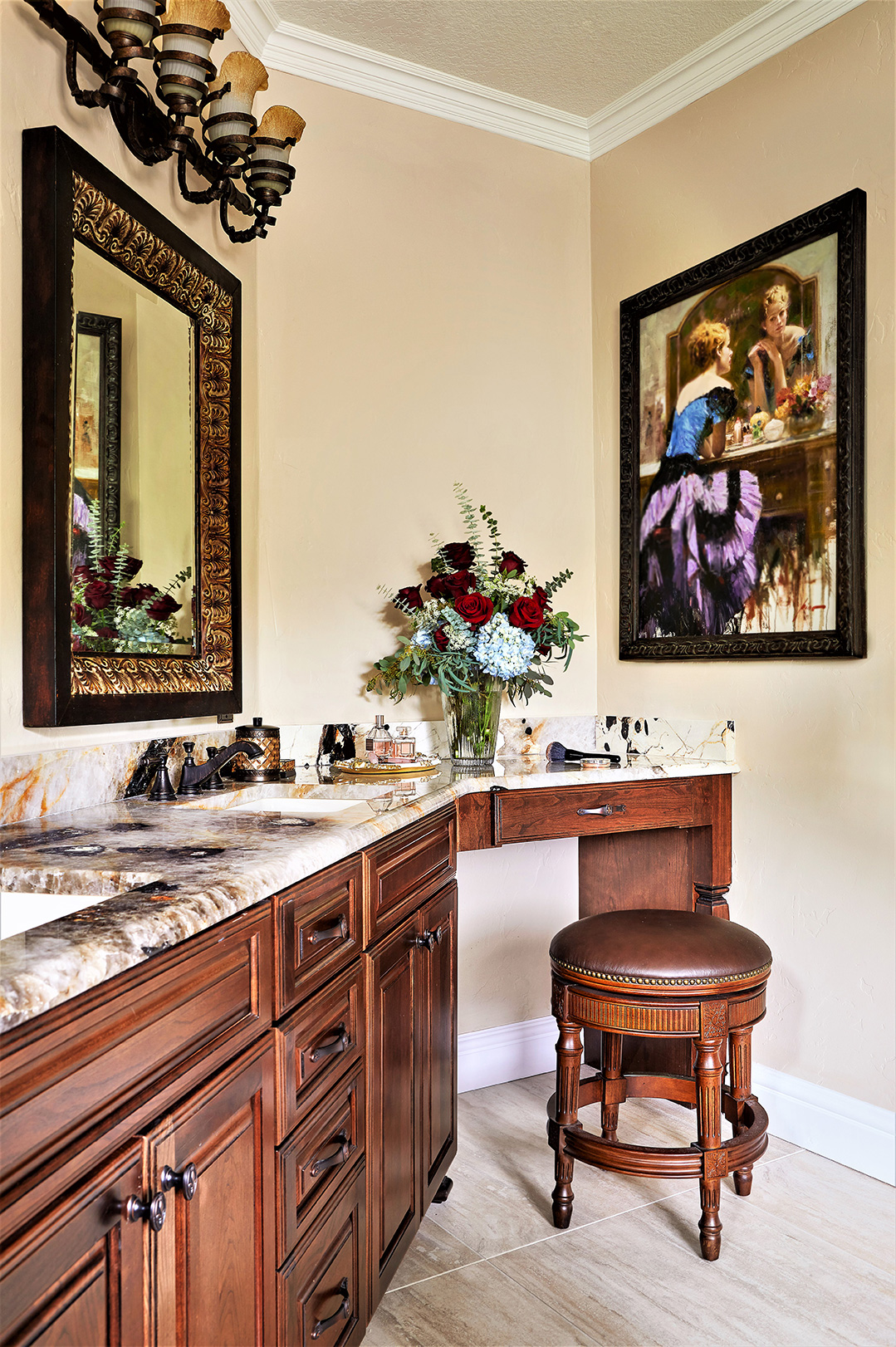
Everything Else
There’s endless customization that you can do to make your bathroom more efficient, functional, and stylish. However, most of this stuff comes down to personal needs and taste–something we like to work with our clients one-on-one with. We listen to your ideas, your wants, and then we help you get creative. Our project managers, who have been helping people design and build bathrooms for years, might even have a trick or two that you haven’t thought of. Give us a call, and we’ll be happy to provide an estimate for your new bathroom remodel.

